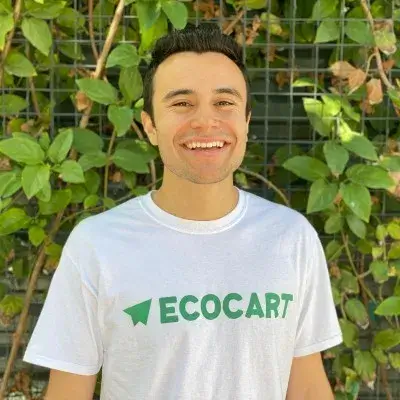Ready to build your own Founder-Led Growth engine? Book a Strategy Call
Frontlines.io | Where B2B Founders Talk GTM.
Strategic Communications Advisory For Visionary Founders
Conversation
Highlights
When Product Clarity Trumps Category Creation: Inside Violet’s Unconventional Go-to-Market Journey
Four years of investor rejections would break most founders. But for Brandon from Violet, those years of building in relative obscurity while trying to define a new category in ecommerce infrastructure led to an unexpected insight: sometimes the best go-to-market strategy is refusing to play the category creation game altogether.
In a recent episode of Category Visionaries, Brandon shared how Violet eventually found its footing by prioritizing product clarity over marketing hype. “Today, a lot of that market positioning and hype has been counterproductive,” Brandon explains. “A lot of companies over-promising, miss-promising, and that’s been detrimental across the board.”
This realization came after years of trying to fit Violet into existing market categories. The challenge? Their product – which unifies data from various ecommerce platforms into a single API – didn’t fit neatly into any existing box. Even Gartner’s ecommerce analyst struggled to categorize it. As Brandon recalls, “We talked through this for a while…and he just paused and said, ‘well, I can see what you’re doing is definitely novel, but I don’t have a name for this yet.'”
Rather than forcing a category definition, Violet took an unconventional approach: they embraced the ambiguity. “Our main objective is we just want to be able to call the thing what it is,” Brandon notes. This focus on authentic communication over marketing buzzwords became central to their go-to-market strategy.
The approach is perhaps best illustrated by their work with Throne, a creator commerce platform. Before working with Violet, Throne’s team was manually processing orders: “They were doing this for every single product and every single order that came in. Right. Like essentially a mechanical Turk approach to handling a version of integrated checkout.”
Violet’s solution automated this entire process through their API. But rather than position this as a revolutionary new category, they simply focused on solving the concrete problem in front of them. This pragmatic approach has resonated deeply with customers who have been burned by overpromising vendors in the past.
The strategy is paying off. Brandon shares that “we tripled our customer base in the last twelve months or so.” More tellingly, their sales conversations have shifted dramatically: “We try to track how much time are we spending on the sales call trying to sell the product versus trying to explain how they use it…last I checked, we’re at like six minutes of quote unquote sales discussion and then it turned into like, okay, so hang on. So what does my developer have to do?”
This focus on product clarity extends to their visual communication strategy. Brandon explains, “We actually started with the images first, and I said, how do we land what it is that we do in two or three screens? What would that look like?” This led to their distinctive “x-ray view” approach to explaining their product, letting the visuals do the heavy lifting while keeping the language simple and direct.
Looking ahead, Brandon sees a future where commerce becomes increasingly distributed across thousands of applications and experiences. But rather than trying to own a category name, Violet is focused on building the infrastructure that enables this future. As Brandon puts it, “Core to the problem that we’re solving is an architecture question. What should the architecture of this next phase of ecommerce look like?”
For founders navigating similar challenges, Violet’s journey offers a compelling alternative to the conventional wisdom around category creation. Sometimes, the best strategy isn’t to create a new category, but to focus relentlessly on solving real problems and communicating about them clearly. In a world of marketing hype and category confusion, clarity itself can become a powerful differentiator.
Actionable
Takeaways
Leverage Past Experience and Industry Gaps
Brandon's journey with Violet highlights the importance of using past experiences and recognizing industry gaps. Founders should look for unmet needs within their industries, just as Brandon identified the complexities and inefficiencies in e-commerce integrations, leading to the creation of Violet.
Category Creation is a Process of Clarity
Brandon's struggle to define a new market category for Violet underscores that category creation is less about naming and more about achieving clarity on what the product does and its value proposition. Founders should focus on clearly communicating the unique benefits of their product rather than rushing to label their market category.
Building the Right Team and Network Matters
The significance of having a co-founder and team that shares your vision and grit cannot be overstated. Additionally, Brandon's narrative about the shift in fundraising dynamics after finding product-market fit and establishing the right connections illustrates the critical role of building a supportive network around your startup.
Embrace Iteration and Customer Feedback for Product Development:
Violet's approach to product development, starting with visuals and metaphors before finalizing the messaging, emphasizes the importance of iterative development and aligning your product with customer perceptions and needs.
Prepare for a Long Haul in Fundraising and Growth
Brandon's four-year struggle before securing significant funding is a stark reminder of the patience and perseverance required in the startup world. Founders should be prepared for a long journey, focusing on building a solid product and achieving key milestones rather than getting distracted by the fundraising process.





























